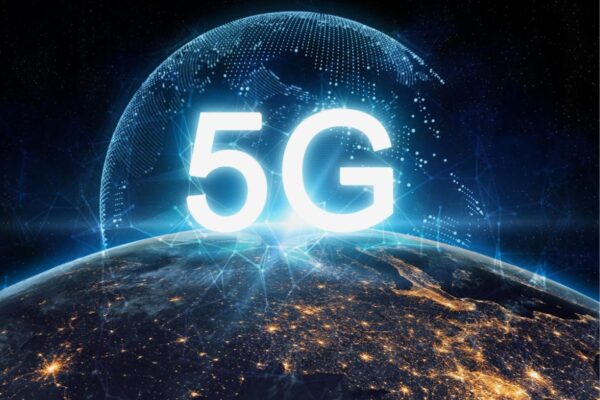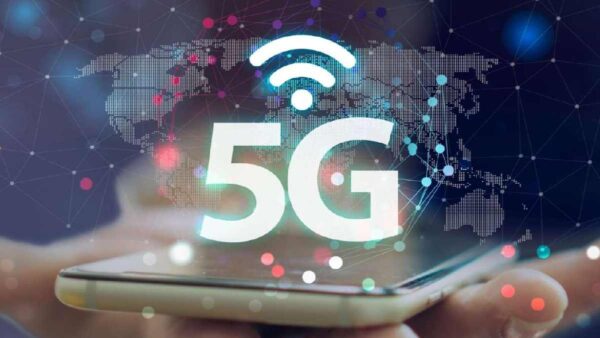5G in India: What to expect from it and how ready we are

5G in India: What to expect from it and how ready we are
India’s locally developed 5G is causing a stir. A few Indian cities, including Delhi, Chennai, Mumbai, Kolkata, Lucknow, Varanasi, Ahmedabad, Bengaluru, Chandigarh, Jamnagar, Gandhinagar, Pune, Siliguri, Gurugram, and Hyderabad, have lately seen the introduction of mobile phone services by Prime Minister Narendra Modi. By 2024, it’s projected to be present all across the country.
Reliance Jio began beta testing shortly after the commercial launch of 5G services by Bharti Airtel.
Nirmala Sitharaman, the union finance minister, declared on Thursday that the 5G network that was just established in the nation was entirely independent. India can also offer 5G infrastructure to other nations. “Nowhere else is imported into our 5G network. It’s our own creation”, she said.
What is 5G technology all about? And how much is India prepared to adopt it?

WHAT DOES 5G OFFER?
5G refers to the fifth generation of mobile broadband technological standards. It is the world’s fastest communication network currently in use. In India, 4G can reach speeds of 40–50 Mbps depending on the location and connectivity, but 5G services could reach rates of 300 Mbps or higher. Telecom behemoths like Bharti Airtel and Reliance Jio will phase in the services over time. Eight cities have now received Airtel 5G Plus, the company’s 5G services. By December 2023, Jio plans to cover the entire nation, and by March 2024, Bharti Airtel will do the same.
Businesses and communication networks that mostly rely on internet access should perform better, thanks to 5G. The technology expects to close the gaps and eliminate the bugs that lead to calling dropouts and linkage problems.
The Digital India movement is what is driving the 5G rollout. It aims to strengthen infrastructure, logistics, and three key industries: agriculture, healthcare, and education.

HOW MUCH ARE WE PREPARED?
Who wouldn’t want mobile internet connectivity that is quicker and more seamless? Who wouldn’t like to update to better technology and faster downloading? Most likely, we all do. The key question is how much more we are willing to pay for it.
In a recent nationwide survey conducted by LocalCircles, the top community social media platform in India, 43% of the 10,019 participants said they would be willing to pay a monthly tariff increase of up to 10% for the new 5G services, while 43% said they would not be “willing to pay anything more than the current tariff for 3G/4G services.” 10% of respondents indicated a willingness to pay between 10% and 25% higher tariff, while 2% were willing to pay between 25% and 50% more tariff.
Fashion photographer Manish Chatturvedi of Mumbai told India Today.in, “Those who desire speedier internet access will choose 5G services. Everything depends on the kind of work you have. He claimed to have already a 5G-capable phone that is “cost-effective, if you look at the wider picture.”
A media expert from Indore named Abhilasha Chakravarty said, “We must be up to date with the latest technology. I have no problems with paying more, even if it is necessary. However, it shouldn’t be excessive.”
An counsel from Chandigarh named Kamal Grover argued that the government has to look for measures to reduce the cost of 5G mobile services for at least a year. “Once they get hooked to 5G, they will continue to opt for it even if its price increases slightly.”
A young professional from Aurangabad named Vaibhav Parwat stated, “I am willing to spend Rs 500-600 each month for 5G. It also makes logic.”
The majority of today’s smartphones and tablets are probably not 5G compliant. You will need to purchase a 5G-capable gadget. Are you ready to take the risk, and if so, when? Of the 9,965 participants in the survey conducted by LocalCircles, 4 per cent disclosed plans to purchase new, appropriate equipment this year, 12 per cent will do so in the first half of 2023, 8 per cent will do so in the second half of 2023, and 10 per cent intend to do so in 2024. Only 20% of people claimed to have a 5G-capable gadget already.
According to the study, which included 64% of men and 36% of women, almost one in four respondents, or 24%, said they have no plans to acquire a new, improved device in the near future. Another 22% said they are still deciding. Parwat said, “People will gradually switch to 5G because 4G speed will deteriorate with time, just as it did with 2G and 3G. Mobile smartphones with 5G capabilities cost between Rs 20,000 and Rs 25,000. You need to purchase a mobile since they cannot be upgraded.”
HOW ARE PHONE MAKERS PLACED?
The telecommunication department has urged operators and phone manufacturers to modernise their operations with cutting-edge technology.
According to the Chinese company, all Xiaomi’s 5G smartphone models support the network. By Diwali, the majority of its smartphones will begin to receive OTA updates.
By the middle of November, Samsung has promised to implement 5G across all of its products. By the middle of November of this year, all of the 5G handsets made by the Korean handset manufacturer would have received over-the-air (OTA) updates.
“As soon as network validation and testing for quality and performance are finished, we are working with our carrier partners in India to offer the finest 5G experience to iPhone users, according to a recent statement from Apple. In December, iPhone customers will receive a software upgrade to make 5G available in India.
The upgrade will be available for the iPhone 14, 13, 12, and SE, among other devices. Under its 5G compatibility section, Airtel’s website stated for all 12 to 14 models of Apple iPhones that “Apple still to upgrade software.” “The Pixel 7, 7 Pro, and Pixel 6a are 5G-ready gadgets. We are actively collaborating with Indian carriers to provide functionality as soon as possible,” said Google in a statement.
The government recently conducted a high-level conference with telecoms and leading smartphone manufacturers to discover why there are delays, which are delaying the rollout of 5G.

CONSUMERS’ EXPECTATIONS
Mobile subscribers will eventually need to upgrade their current smartphones or purchase new 5G-capable devices.
LocalCircles questioned mobile users about what they expected from the 5G services. To invest money in a 5G gadget and a more expensive service package, what benefits must 5G provide? In response to this query, 5% of mobile users said they were certain that 5G would solve problems such as a decrease in call drop and connectivity issues, enhanced voice network, increased data network availability, improved internet speed, and spam or unsolicited calls and texts.
Around 19% of respondents said they anticipated fewer call drops and connectivity problems or an upgraded voice network; 5% said they expected better data network availability, and 12% said they anticipated faster internet. 3% of the roughly 10,000 respondents wished for a decrease in the spam or unwanted calls and messages. Before choosing to upgrade to 5G, 39% of the respondents said that a resolution to all four conditions was crucial.
Chatturvedi remarked, “Call drop is a huge issue. If 5G in India can resolve it, people will embrace the technology in droves.”
Parwat noted, “I believe that while tackling speed, the 5G services must increase connectivity. Additionally, spam emails must be eliminated.”
LocalCircles founder Sachin Taparia emphasised that “the government has to engage with telecom companies and keep the 5G tariffs as similar as possible to the current pricing.” He continued by saying that, in addition, the government must collaborate with device manufacturers to find ways to make as many device models compliant through the required software upgrades and maintain the affordability of entry-level 5G devices so that more subscribers can migrate than what the survey currently anticipates.




